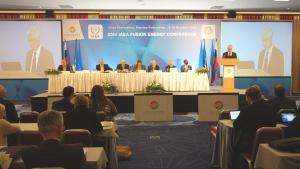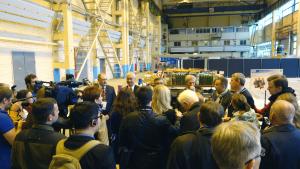25th IAEA Fusion Energy Conference: Expanding the frontier of fusion
"The world has moved on and so has the development of fusion energy," said Alexander Bychkov, the IAEA Deputy Director-General, in his opening speech. "With ITER under construction in the south of France and plans for DEMO reactors being developed around the world, the focus of nuclear fusion research is slowly shifting from pure research to technology, material science and engineering. This does not mean that pure research is becoming less important, but that other aspects increasingly have to be taken into account as well. In the future, when ITER will start operation and when DEMO reactors are being designed, the questions of safety, security and even safeguards will grow in importance."
The head of the Russian Domestic Agency for ITER, Anatoli Krasilnikov, described the broad scope of Russian contributions to ITER and the good progress achieved to date, and invited participants to take a technical tour of the Efremov Institute situated on the outskirts of St. Petersburg. It is here where Russian superconductors for ITER take shape and plasma-facing components are designed, manufactured and tested for their heat resistivity. A press conference was held for more than 50 Russian and international journalists, staged right up against huge mockups of busbars, fast discharge and switching units to help bring home the impressive dimensions of the ITER plant. When asked for some good arguments against those who question the pace of construction, Oleg Filatov, director of the Efremov Institute, had one short answer: "Look around," he said. "Welcome to the argument factory!"




